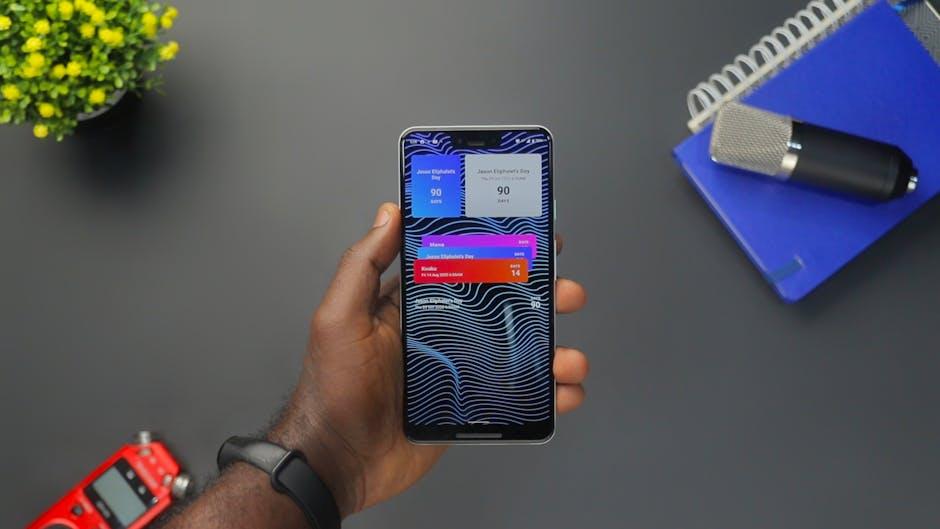In the silent hum of our digital lives, app notifications emerge as tiny messengers-beacons of connection, urgency, and sometimes distraction. They chirp, buzz, and flash, weaving themselves into our daily routines with a subtle yet profound influence. But what is it about these seemingly innocuous pop-ups that captures our attention so persistently? The psychology of app notifications unravels the complex interplay between human behavior and digital cues, revealing how these small prompts tap into our deepest cognitive and emotional wiring. This exploration invites us to understand not just the mechanics behind notifications, but the intricate dance of anticipation, reward, and habit that keeps us coming back for more.
Understanding User Attention and Notification Triggers

At the core of successful app engagement lies a deep understanding of how users allocate their attention. Our brains are wired to respond to novelty, urgency, and relevance-three pillars that can make or break notification effectiveness. Notifications that tap into these triggers are more likely to cut through the digital noise and invite a timely response. However, the challenge is balancing the frequency and content of these prompts to avoid becoming intrusive or ignored. Effective notifications are those that respect user context, delivering value without demanding constant vigilance.
To maximize impact, designers lean on psychological cues such as carefully timed alerts, personalized messages, and emotional resonance. Consider the way our attention spans fluctuate throughout the day; interruptions at the wrong moment can frustrate users, while well-timed nudges can encourage seamless interaction. Below is a simplified framework illustrating key factors behind attention capture:
| Attention Trigger | Example | User Response |
|---|---|---|
| Urgency | Flash sale alert | Immediate check |
| Relevance | Weather update for current location | Engagement |
| Novelty | New feature introduction | Curiosity-driven exploration |
- Context awareness: Align notifications with the user’s current environment or activity.
- Clear value proposition: Show why the notification matters immediately.
- Personalization: Use user data to make messages feel tailored and relevant.
The Emotional Impact of Persistent Alerts on User Behavior

Users often find themselves caught in a cycle of anxiety and anticipation, fueled by the relentless drip of alerts that punctuate their day. These constant interruptions can trigger feelings of stress, overwhelm, and a fractured attention span, ultimately shaping how people engage with their devices. Over time, what begins as curiosity can morph into compulsive behavior, where every notification incites a brief dopamine rush, driving users to check their phones habitually-even when the alerts lack meaningful content.
Interestingly, this psychological dance influences behavior in subtle yet profound ways:
- Alert Fatigue: Users start to ignore or disable notifications, risking missed important information.
- Reduced Productivity: Frequent disruptions fragment focus, reducing task efficiency.
- Emotional Drain: Constant alerts can lead to feelings of frustration or dread.
- Dependence Cycle: Notifications foster a habitual need to check devices, reinforcing engagement.
| Effect | User Reaction | Long-term Outcome |
|---|---|---|
| Alert Overload | Ignore or mute notifications | Missed critical updates |
| Interruption | Frustration and distraction | Lowered concentration levels |
| Dopamine Spike | Frequent checking | Habitual device dependence |
Balancing Engagement and Intrusion Through Thoughtful Design

Designing notifications that captivate users without overwhelming them requires a nuanced understanding of human attention and user experience. Developers and designers must tread the fine line between creating alerts that are sufficiently compelling to prompt action, yet subtle enough to respect the user’s mental space. This balance often comes down to thoughtful timing, personalization, and relevance. For example, notifications sent during appropriate times of the day or tailored to individual preferences can feel more like helpful reminders rather than intrusive interruptions, thereby fostering positive engagement.
Consider these key principles to harmonize engagement with user comfort:
- Context-awareness: Align notifications with user activity and environment to increase relevance.
- Customization options: Empower users to control the frequency and type of alerts they receive.
- Minimalism in design: Use concise messaging and subtle visual cues to reduce cognitive load.
- Adaptive timing: Space notifications thoughtfully to avoid bombardment.
| Feature | Benefit | Example |
|---|---|---|
| Personalized Alerts | Boosts relevance and user trust | Reminders based on past activity |
| User Controls | Enhances feeling of autonomy | Toggle notification settings |
| Smart Scheduling | Reduces annoyance | Do-not-disturb during sleep hours |
Strategies for Crafting Notifications That Respect User Autonomy

Empowering users begins with truly listening to their preferences. Notifications should be crafted with clear options for customization, allowing users to choose the frequency, type, and timing of alerts. By offering granular control, apps acknowledge individual autonomy and reduce the risk of notification fatigue. Consider implementing settings such as “silent hours,” priority levels, or topic filters that users can easily toggle according to their daily routines and moods. This approach transforms notifications from intrusive interruptions into valued reminders that coexist harmoniously with the user’s lifestyle.
Transparency and contextual relevance are equally vital. Instead of generic alerts, use meaningful, personalized messages that align with a user’s behavior and interests. For example, a fitness app might notify a user about a milestone achieved rather than just a standard encouragement prompt. Additionally, include clear opt-out paths and respect a user’s decisions without over-persisting or disguising dismissal options. Create a balanced ecosystem by following these key principles:
- Respect timing by avoiding notifications during typical rest periods
- Ensure message clarity with concise, purposeful language
- Provide easy access to notification preferences within the app
- Use adaptive algorithms to predict optimal engagement windows
| Strategy | Benefit | Example |
|---|---|---|
| Customizable Schedules | Reduces user stress | “Do Not Disturb” settings |
| Personalized Content | Increases relevance | Milestone alerts |
| Clear Opt-Out | Builds trust | Simple unsubscribe buttons |
The Conclusion
In the intricate dance between user and device, app notifications wield a subtle command-tugging at our attention, shaping our moods, and steering our behaviors in ways both seen and unseen. Understanding the psychology behind these digital nudges not only demystifies their power but also empowers us to reclaim control in an age of constant connectivity. As we navigate this ever-evolving landscape, perhaps the key lies in striking a mindful balance-embracing technology without letting it dictate the rhythm of our lives.














